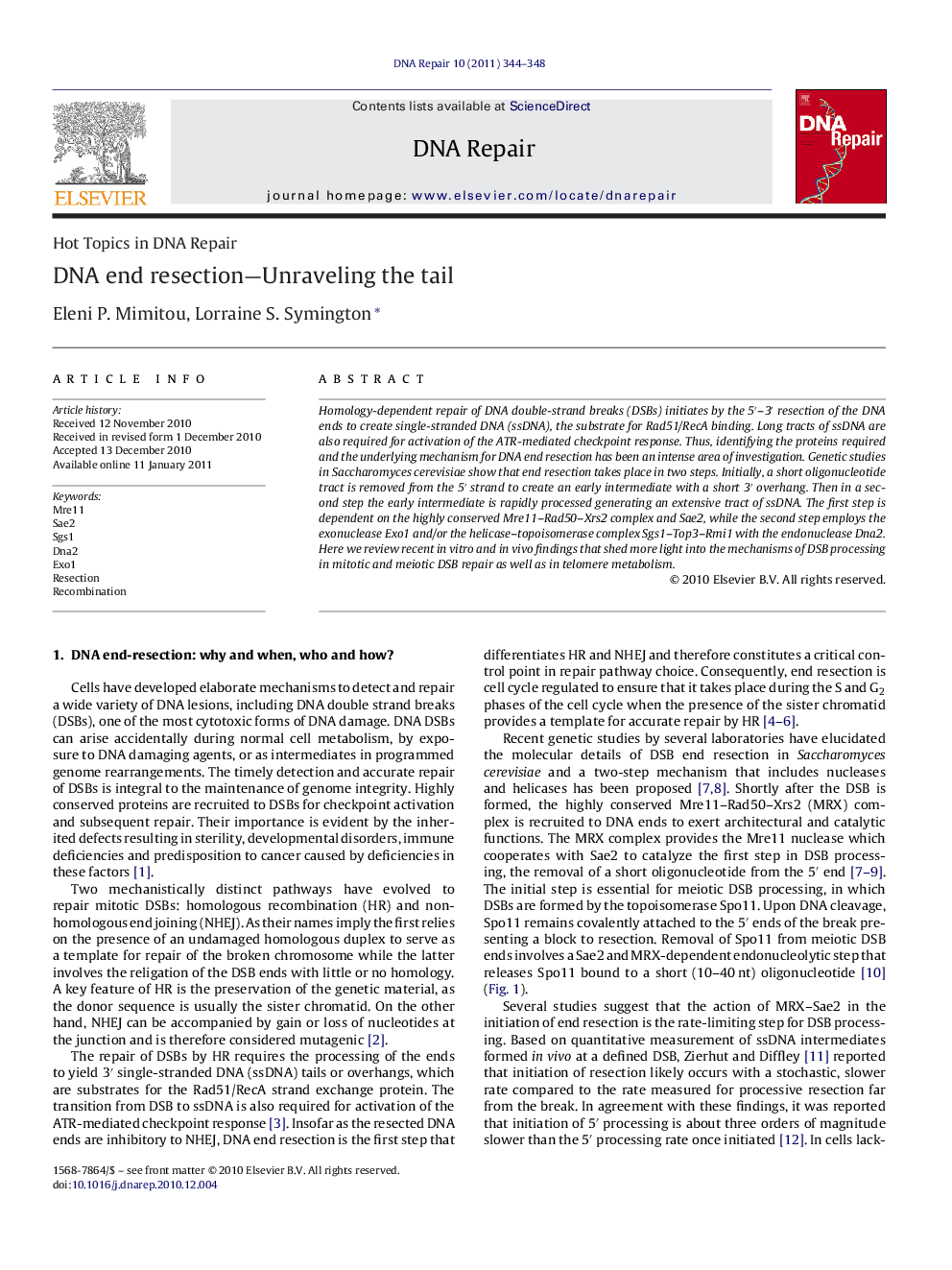| کد مقاله | کد نشریه | سال انتشار | مقاله انگلیسی | نسخه تمام متن |
|---|---|---|---|---|
| 1980542 | 1061864 | 2011 | 5 صفحه PDF | دانلود رایگان |

Homology-dependent repair of DNA double-strand breaks (DSBs) initiates by the 5′–3′ resection of the DNA ends to create single-stranded DNA (ssDNA), the substrate for Rad51/RecA binding. Long tracts of ssDNA are also required for activation of the ATR-mediated checkpoint response. Thus, identifying the proteins required and the underlying mechanism for DNA end resection has been an intense area of investigation. Genetic studies in Saccharomyces cerevisiae show that end resection takes place in two steps. Initially, a short oligonucleotide tract is removed from the 5′ strand to create an early intermediate with a short 3′ overhang. Then in a second step the early intermediate is rapidly processed generating an extensive tract of ssDNA. The first step is dependent on the highly conserved Mre11–Rad50–Xrs2 complex and Sae2, while the second step employs the exonuclease Exo1 and/or the helicase–topoisomerase complex Sgs1–Top3–Rmi1 with the endonuclease Dna2. Here we review recent in vitro and in vivo findings that shed more light into the mechanisms of DSB processing in mitotic and meiotic DSB repair as well as in telomere metabolism.
Journal: DNA Repair - Volume 10, Issue 3, 7 March 2011, Pages 344–348